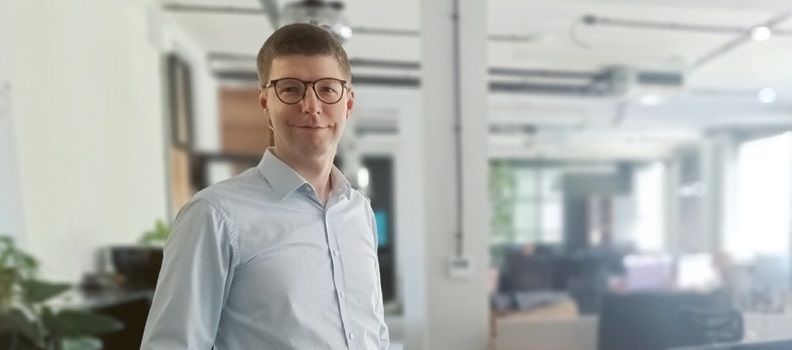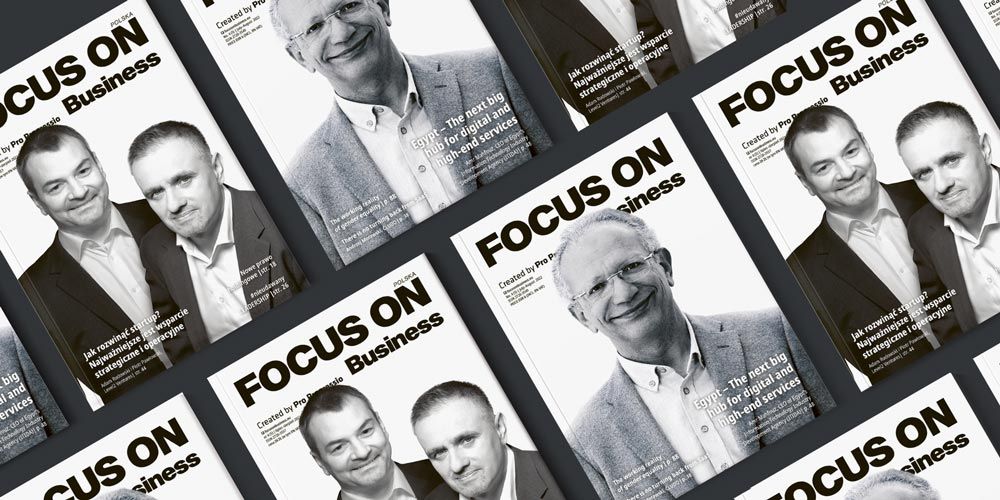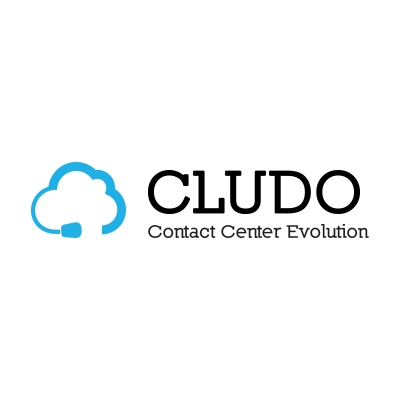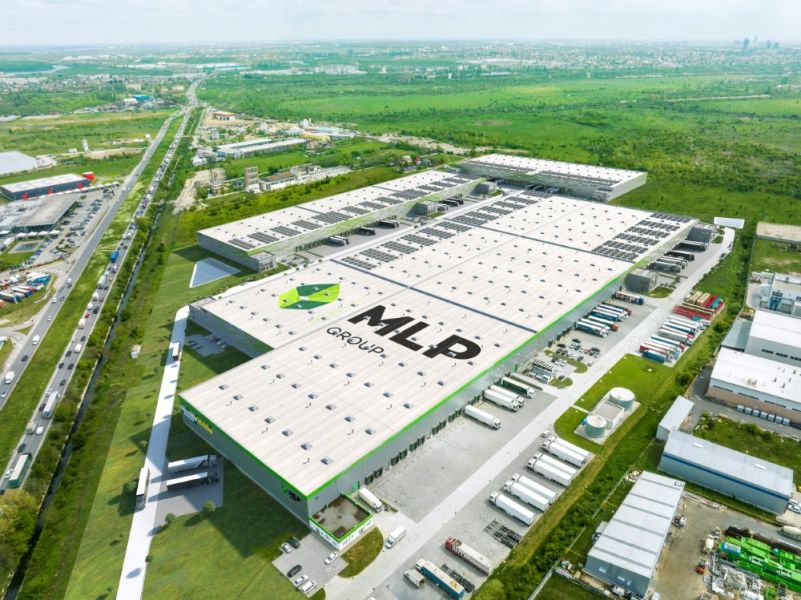There is no turning back from SaaS

We talk with Andrzej Morawski, Key Account Director & Product Development Manager at CLUDO about the advantages of cloud solutions and about new technologies in the Contact Center industry.
FOCUS ON Business: For 10 years CLUDO is a professional software provider helping companies with contact centers in Poland. Starting your business, as one of the few in our country, you relied on the SaaS (Software as a Service) model. How does the popularity of this model look like today – in Poland and around the world?
Andrzej Morawski, CLUDO: I recently came across a study in which 13 thousand adults from 12 Western countries were asked about the topic of ownership. It turns out that 57% of people would like to own less and 70% of respondents agree with the statement that "Subscriptions free people from the burden of ownership".
In today's world, subscription is the default choice. Some young people are taking a similar approach to owning their own home, preferring renting to owning, not at all for financial reasons. We are used to subscriptions – we pay for access to online newspapers, VOD platforms and online bookstores. We are less and less surprised by subscription-based printers, or even a subscription for diapers or a subscription for shavers. Why should the business market be so different from the consumer market?
Software as a Service, or SaaS, also known as "on-demand software," is nothing more than subscription software. According to Gartner, spending on SaaS software will grow at a rate of 15-20% year-over-year. Growth will also affect sister industries like BPaaS, PaaS, IaaS and DaaS. This entire segment – public cloud spending – will grow 46% in the next two years, to $600 billion. That's as much as Poland's GDP in 2021. One could say, following Marc Andreessen words, that "software is eating the world". 5 out of the 10 most valuable companies in the world are technology companies. The winners are entrepreneurial tech companies, often from Silicon Valley, that are disrupting the status quo. I expect even more industries to be revolutionized by software in the next 10 years.
Is SaaS the only right solution, from which there is actually no going back?
There is no turning back from SaaS. I notice big changes in the contact center systems industry, in which I work every day. Let’s take insurance corporations with contact centers for several hundred agents. Few years ago they were very conservative in their approach to subscription solutions that were not located on their own servers. Currently, many of them are looking with interest at cloud solutions in the SaaS model. It’s a sign of the times that the Polish Financial Supervision Authority (KNF), as the institution regulating this market, is open to such solutions. We are talking about a situation in which the law has caught up with the needs of companies.
The arguments for SaaS and cloud brought by our customers include lower costs of launching, definitely faster implementation and easier and cheaper maintenance. From the perspective of a company that helps clients to choose the best solution and helps customers to adapt it, the SaaS model works very well. This setup allows continuous system evolution, following the needs of companies. Cloud software is updated more often than, for example, on-premise solutions. For example, Genesys Cloud CX contact center software, which we offer to our customers, had about 70 product update releases in the first 5 months of this year, while other non-cloud and non-subscription products from the same vendor had few updates in the same period.
While the updates for on-premise systems consisted mostly of minor changes, the updates for the cloud system included many new features and functionalities. This particular example could also serve as a suggestion on what the manufacturers of similar solutions focus on the most.
The model of purchasing licenses every 5 years for on-premise solutions becomes unattractive. This is especially true when compared to cloud and subscription solutions. The 5-year cycle consists in purchasing a software license for ownership and amortizing it over the next 5 years. After that time, the cycle repeats and you have to do the implementation all over again. We encourage customers, if possible, to constantly evolve their systems, so that they are always up to date and adapted to the current situation. This is certainly easier with a cloud systems.
Concepts that, until recently, were associated mainly with science fiction, such as: artificial intelligence, virtual reality, augmented reality, digital assistants, IoT, now accompany us in many aspects of everyday life and are a permanent element supporting customer service in companies. What technologies on the market are most interesting for contact centers?
I’m most interested in the technologies that are related to voice, such as Natural Language Processing (NLP), speech recognition and speech synthesis. They are increasingly used in the broadly defined customer service industry. Among others, chatbots and voicebots are based on them.
These tools will be a standard element of every contact center system within the next 5 years. The benefits they bring are undeniable: on one hand they allow consumers to contact them at any time of day or night and solve repetitive problems instantly, on the other hand they free up valuable time of agents who can finally focus on less repetitive problems and customers who really need this human touch. Another example of using the above mentioned technologies is, for example, automatic quality monitoring of calls.
What's the point of that? A significant portion of our conversations with any customer service desk begins with the message: "We kindly inform you that all calls are recorded for quality and training purposes.". In reality only about 0,5%-1% of these calls are listened to. Supervisors or contact center managers have no time for that. Instead, they are randomly choosing calls, so the learning process of consultants is tedious.
With the help of technology 100% of phone calls can be monitored, catching key words or stages of conversations, gauging customer emotions, etc. This allows a teamleader or manager in a contact center to make a much better selection of the calls they listen to. They can, for example, select recordings in which the name of the competitor company appeared, or customers were most dissatisfied, or conversations in which the customer and the agent talk at once.
Please elaborate on the issue of omnichannel solutions. It may seem that in the perception of many people, even those who are not the biggest fans of modern technologies, a company which provides the customer with a contact form on its website as a communication channel may appear to be a relic of the past. Is omnichannel really a requirement for everyone? How in CLUDO is omnichannel perceived and what – apart from technology – is it?
Most of my professional life I’m engaged in online marketing and customer service. In each of these areas, omnichannel is understood differently. Online marketing focuses on the source of customer acquisition and the customer's option to use a particular channel. Online marketing completely ignores how companies manage to serve these channels. CC systems, on the other hand, offer the possibility of serving customers on the phone, messenger, whatsApp or in a chat using one tool. Last, but not least, they do not think about the paths the customer needs to take to be able to communicate using one of the channels.
This is the problem we are currently addressing at CLUDO by releasing a new product called LiveEngage. We’ve combined many years of my professional experience gained while developing LiveCall (sold last November to CLUDO), with CLUDO’s experience with CC systems.
The result is an eye-friendly platform for engaging users on the websites. LiveEngage can be easily integrated and managed. As a marketing tool it has native integration with systems such as Google or Facebook Analytics, offers channels such as phone, chat, messenger, whatsApp, video or audiocall. At the same time it integrates perfectly with Contact Center systems (currently Collab One Contact, Genesys Cloud CX, Genesys Pure- Connect). Thanks to this, all these interactions can be reported in a consistent way. Moreover the agent – talking to the customer, regardless if using phone, chat or whatsapp sees customers’ profile and previous interactions.
For customers, this is a definite change for the better, because they may talk using any chosen channel. On the other hand, an agent doesn't need to ask about things the customer has already shared before.
What are the other important trends that will shape the future of the contact center industry in Poland and worldwide?
Apart from the increasing use of artificial intelligence, voice technology and cloud solutions or the use of multichannel, I am constantly looking at remote working. At the beginning of the COVID-19 pandemic, companies moved most of their contact center employees to work from home to maintain business continuity. "No one steps twice in the same river." as the proverb say. It is now clear – while most companies thought that remote working would be a temporary solution, it turns out that now the most popular model is hybrid work and it is not uncommon to see fully remote teams. This model of operation brings new challenges.
On the one hand, training of remote workers, on the other, quality monitoring, on the third, counteracting turnover, which has traditionally been high in this industry – these are just some of the problems that I think will be quickly answered by technological development. Let's observe. Interesting times are ahead of us.
Thank you for the interview.
This article comes from magazine:
FOCUS ON Business #5 July-August (4/2022)
 Check the issue
Check the issue








